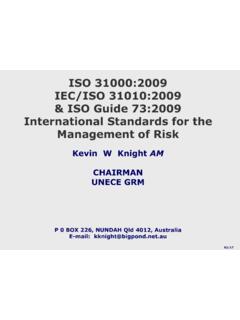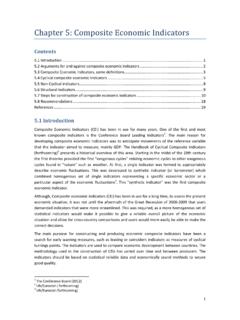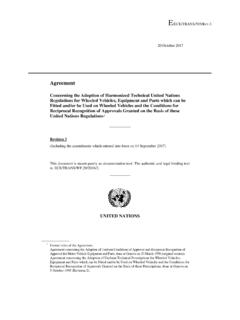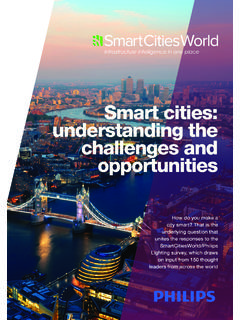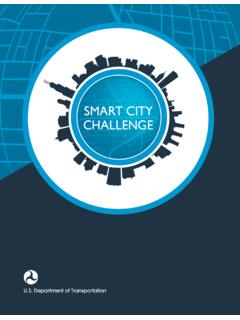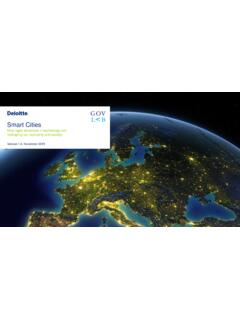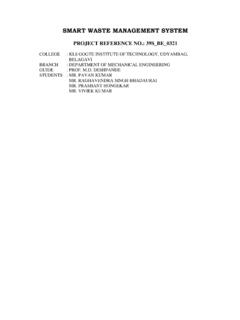Transcription of GLOBAL SMART CITIES PROJECT: Smart urban solutions for ...
1 2014-2015. UNITED SMART CITIES : SMART urban solutions for transition and developing countries Project document Ms. Gulnara Roll, Head, Housing and Land Management Unit UNECE. T: +41 22 917 22 57. E: Ms. Domenica Carriero, Housing and Land Management Unit UNECE. T: +41 22 917 16 72. E: Table of Contents Introduction ..2. Project history ..2. Project partners and associated members ..3. Project goal and objectives ..4. GLOBAL SMART CITIES project Geographical scope ..6. Project network of SMART CITIES ..6. Project activities: what has been done in 2014 ..8. Project activities: planning for end 2014 and 2015 ..9. Project management ..11. Expected impact of the project ..13. Annex 1. SMART city profiles methodology ..14. Annex 2. Procedural steps for the preparation of SMART city profiles.
2 16. Annex 3. Terms of references to pilot CITIES ..19. Annex 4. SMART city action plan template ..20. 1. Introduction ..20. 2. Overview of the current situation ..20. 3. Conclusions and outcomes of the SMART City workshop: Current trends and challenges ..20. 4. Steps to undertake ..20. 5. Conclusion ..20. 6. References ..20. 7. Annex 5. SMART city profile structure template ..21. Annex 6. Project partners detailed profiles ..22. 1. Introduction The actual high level of urbanization is presenting a serious challenge for the sustainable development of our CITIES . urban areas are responsible for considerable world's energy consumption and greenhouse gas net Urbanization leads to the continuing expansion of urban areas and urban sprawl, reducing the land available for other uses.
3 This urbanization is often uncontrolled, creating and expanding informal settlements, whose residents may lack security of tenure and social and physical infrastructure. Furthermore, CITIES , the way they are planned, are not prepared for the ongoing demographic changes, such as the rapid ageing of the population in Western Europe. Globally a large share of the population does not have access to affordable housing. This situation with all the mentioned challenges that urban areas face, has the potential to become critical and irreversible if not acted upon soon. At the same time, approaches to urban development, if aptly and timely rethought and put into practice, have the potential to become the driving force underpinning sustainable development.
4 Much attention has been devoted in recent years to the topic of SMART CITIES . Multiple programmes have been successfully implemented in large CITIES in different parts of the world, including, for instance, in European CITIES of Amsterdam, London, Vienna; a rough mapping of SMART CITIES in the European Union (EU) was The EU is implementing the European Innovation Partnership on SMART CITIES and Communities (EIP), which is a large-scale mapping and coordination exercise of SMART CITIES within the The implemented programmes continuously demonstrate great possibilities of the application of innovative, technologies and solutions in CITIES . They also have shown the importance of partnerships between national, local governments and private sector towards promoting SMART urban solutions .
5 For small and medium-sized CITIES , which have limited access to financial resources, it is much more difficult to promote SMART city solutions . Countries with economies in transition where access to financial resources for investment into innovative technologies is limited are not part of those initiatives. At the same time, those countries would benefit the most from the application of the SMART CITIES approaches; they can leapfrog in the quality and diversity of services they provide to their inhabitants. Project history According to the UNECE survey of member States (2013)4, housing and urban management sectors are highly decentralized and the implementation of measures greatly depends on the local governments and local stakeholders, including private (both commercial and non-profit) companies.
6 According to the survey respondents, the competences of the federal/national governments are limited to formulating policies and legislation, establishing norms and standards and providing subsidies for housing. National governments have shared responsibilities with regional and local governments and with the private sector for providing social or affordable housing, offering loans 1. Data source: The United Nations Department of Economic and Social Affairs 2. 3. 4. GLOBAL SMART CITIES PROJECT: SMART urban solutions for countries with transition economies and developing countries 2. for housing purposes, setting urban regulations, approving urban plans and investments in urban infrastructure. In order to engage more effectively the local governments and private sector, the intergovernmental UNECE Committee on Housing and Land Management decided in 2012 to include the topic of SMART CITIES as one of its priority activities in the Committee's programme of work 2014 - 2015.
7 Under the cluster Sustainable urban development . The Committee's secretariat further developed a possible SMART CITIES project concept and discussed it with representatives of partner organizations, including Organization for international Economic Relations (OiER), UN-Habitat, other partner organizations, universities, private sector companies and NGOs. As a result, an open platform for sharing best practices and experiences on SMART CITIES will be established as part of the project. Project partners and associated members The project includes three levels: Core project partners Associated partners private sector organizations, academia CITIES involved in SMART city initiatives. The current project core partners include (for their profiles see Annex 7).
8 1. United Nations Economic Commission for Europe Housing and Land Management Unit (UNECE). 2. Organization for international Economic Relations (OiER). 3. UN Habitat Moscow Office 4. Dubai Real Estate Institute 5. Environment Agency Austria (EAA). 6. International Society of City and Regional Planners (ISOCARP). 7. Royal Institution of Chartered Surveyors (RICS). 8. Laboratory of Intelligent System Automation, Moscow State University of Civil Engineering, Russian Federation 9. Council of the Baltic Sea States Secretariat Ongoing negotiations are running with possible additional core partners, including 1. OECD, 2. Energy CITIES 3. UBC (Union of the Baltic CITIES ). 4. SMART CITIES Switzerland 5. CIS Inter-Governmental Council for Cooperation in Construction Activities Associated project partners - academia 1.
9 ETH Institute of Technology, Zurich, Switzerland Associated project partners - private sector 1. Reach-U, Estonia 3. 2. OiER is inviting a few selected private sector members to join the project as international private sector partners. The businesses will be shortlisted and included based on sector relevant expertise and technology related to urban development and SMART CITIES . The businesses commit to support the project and the project partners both financially and in the implementation of activities of the project and participating CITIES . Associated project partners associations from municipalities, professional associations 1. International Council for Local Environmental Initiatives 2. Energy CITIES Associated project partners - CITIES ' focal points The focal points in the CITIES involved in the project are as well our partners.
10 Project stakeholders in affiliated with the project countries The main identified stakeholders for the project are: - National governments - Local authorities and city councils of the participating municipalities - City planners/managers, urban architects - Private sector/industrial players from the relevant fields - Academia and other research institutions - NGOs Project goal and objectives A strategic goal of the proposed project is to promote sustainable urban development, especially in countries with transition economies and developing countries, through analysis of practices and policies, pilot activities, exchange of experiences and best practices, networking and capacity building. The project will help to scale up the European experiences of SMART CITIES to countries outside of the EU.




